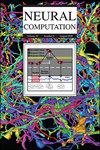Dynamics and Bifurcation Structure of a Mean-Field Model of Adaptive Exponential Integrate-and-Fire Networks
IF 2.1
4区 计算机科学
Q3 COMPUTER SCIENCE, ARTIFICIAL INTELLIGENCE
引用次数: 0
Abstract
The study of brain activity spans diverse scales and levels of description and requires the development of computational models alongside experimental investigations to explore integrations across scales. The high dimensionality of spiking networks presents challenges for understanding their dynamics. To tackle this, a mean-field formulation offers a potential approach for dimensionality reduction while retaining essential elements. Here, we focus on a previously developed mean-field model of adaptive exponential integrate and fire (AdEx) networks used in various research work. We observe qualitative similarities in the bifurcation structure but quantitative differences in mean firing rates between the mean-field model and AdEx spiking network simulations. Even if the mean-field model does not accurately predict phase shift during transients and oscillatory input, it generally captures the qualitative dynamics of the spiking network’s response to both constant and varying inputs. Finally, we offer an overview of the dynamical properties of the AdExMF to assist future users in interpreting their results of simulations.自适应指数型积分网络平均场模型的动力学和分岔结构。
大脑活动的研究跨越了不同的尺度和描述水平,需要在实验调查的基础上发展计算模型来探索跨尺度的整合。尖峰网络的高维性给理解其动力学带来了挑战。为了解决这个问题,平均场公式提供了一种潜在的降维方法,同时保留了基本元素。在这里,我们将重点关注先前开发的自适应指数积分和火焰(AdEx)网络的平均场模型,该模型用于各种研究工作。我们观察到平均场模型和AdEx尖峰网络模拟在分岔结构上的定性相似性,但在平均发射率上的定量差异。即使平均场模型不能准确地预测瞬态和振荡输入期间的相移,它通常也能捕捉到脉冲网络对恒定和变化输入响应的定性动态。最后,我们概述了AdExMF的动态特性,以帮助未来的用户解释他们的模拟结果。
本文章由计算机程序翻译,如有差异,请以英文原文为准。
求助全文
约1分钟内获得全文
求助全文
来源期刊

Neural Computation
工程技术-计算机:人工智能
CiteScore
6.30
自引率
3.40%
发文量
83
审稿时长
3.0 months
期刊介绍:
Neural Computation is uniquely positioned at the crossroads between neuroscience and TMCS and welcomes the submission of original papers from all areas of TMCS, including: Advanced experimental design; Analysis of chemical sensor data; Connectomic reconstructions; Analysis of multielectrode and optical recordings; Genetic data for cell identity; Analysis of behavioral data; Multiscale models; Analysis of molecular mechanisms; Neuroinformatics; Analysis of brain imaging data; Neuromorphic engineering; Principles of neural coding, computation, circuit dynamics, and plasticity; Theories of brain function.
 求助内容:
求助内容: 应助结果提醒方式:
应助结果提醒方式:


